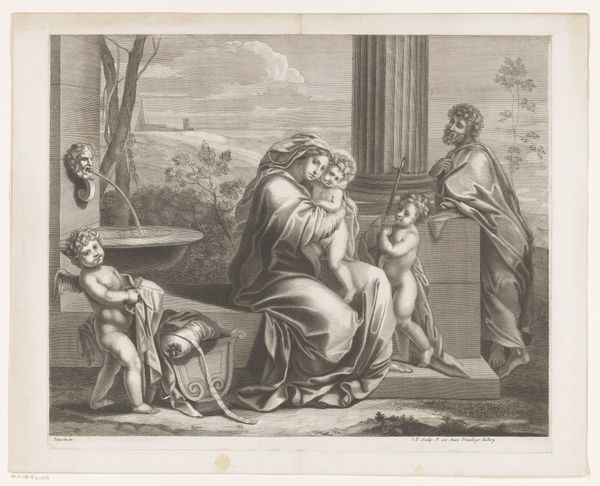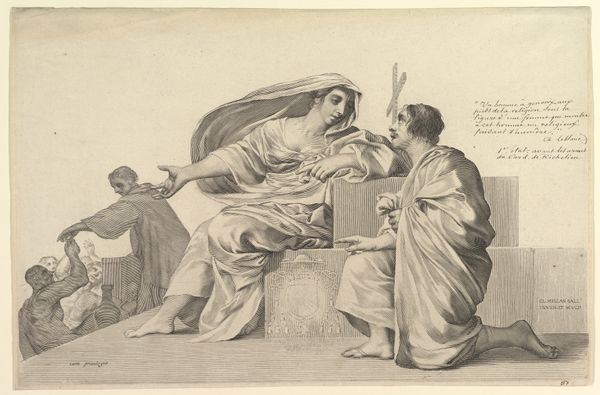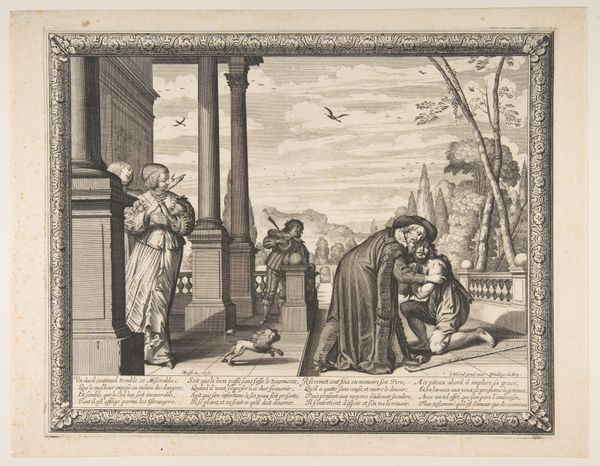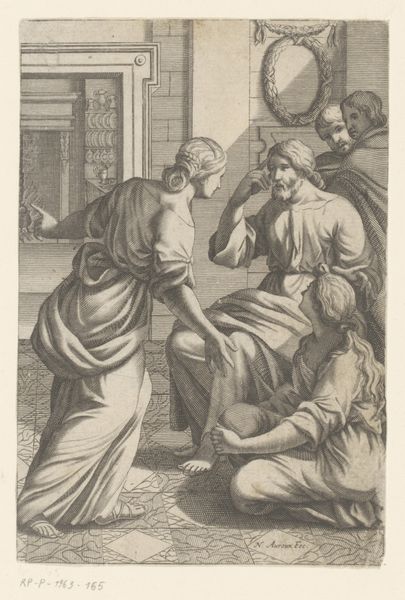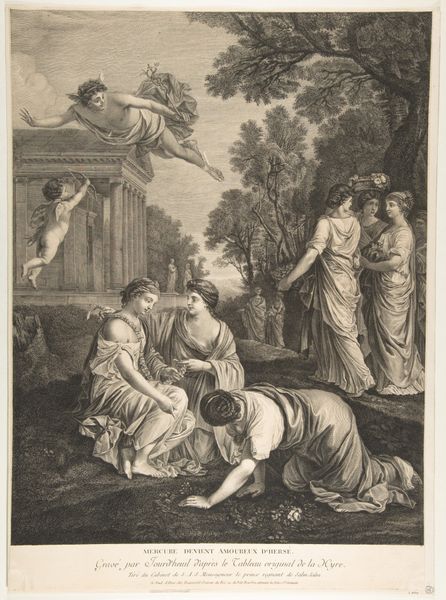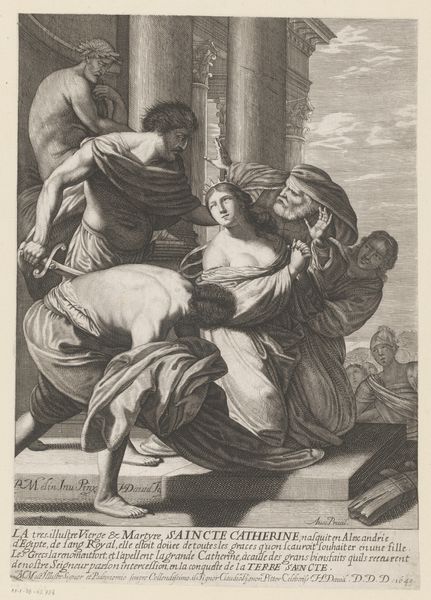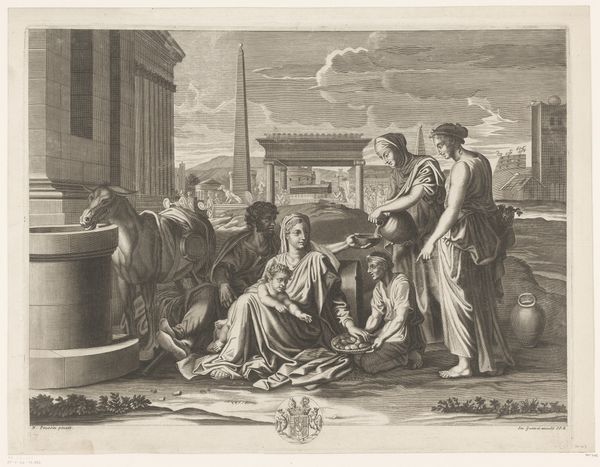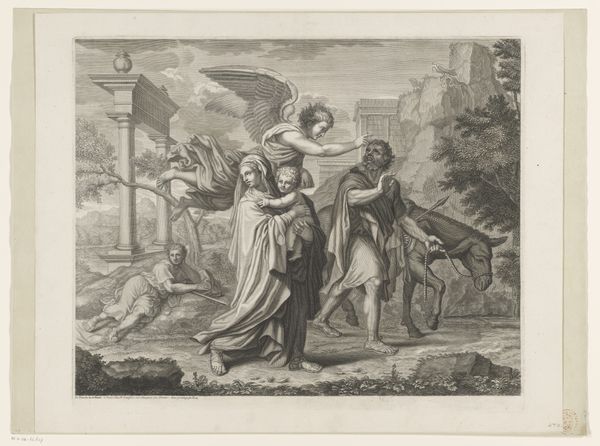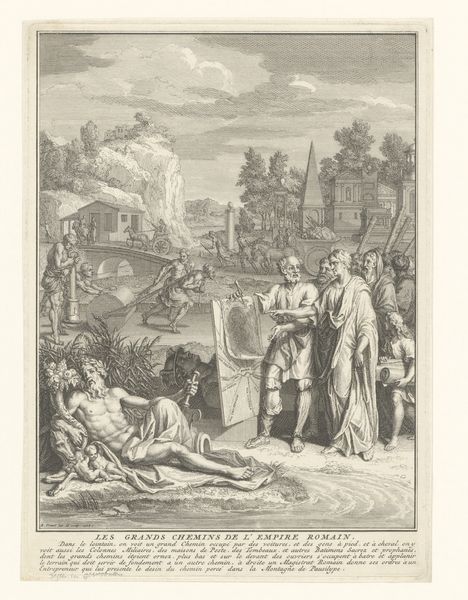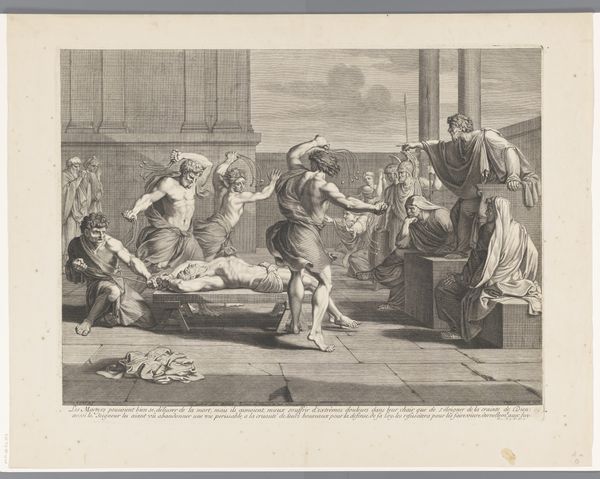
Visitation; Saint Elizabeth embracing the Virgin at center as Saint Joseph walks toward them on the right and Zacharias greets them on the left; from 'Theatrum Pictorium', after Palma Il Vecchio 1651 - 1665
0:00
0:00
drawing, print, engraving
#
drawing
#
baroque
# print
#
charcoal drawing
#
history-painting
#
engraving
Dimensions: Sheet (Trimmed): 11 15/16 in. × 20 in. (30.3 × 50.8 cm)
Copyright: Public Domain
Editor: This is an engraving from ‘Theatrum Pictorium,’ after Palma Il Vecchio, dating from 1651 to 1665, and titled ‘Visitation; Saint Elizabeth embracing the Virgin…’. The crosshatching is really intricate. I am curious about how these engravings were made, especially in the 17th century. What can you tell me about the methods of production during this period? Curator: It's essential to view this print through the lens of its production. Consider the engraver, Peeter van Lisebetten, his labor, and the printing process itself. The lines you see are carved into a metal plate, which requires a great deal of skill and physical effort. Each mark, each varying weight of line, meticulously adds up. And prints like these were produced on a larger scale and meant for broader consumption than unique paintings, of course. How does that change the way you consider its message? Editor: It seems like this method could easily produce many nearly identical copies. Because of this accessibility, I am now looking at it through the lens of how the broader public would receive art in this format, as opposed to artwork that was available to be viewed by a select few. Curator: Precisely. Think of the Theatrum Pictorium itself. What do you think was the goal of archiving images through reproducible media in that time? Was it a means for democratizing access to great paintings or rather a commodification of art for wider circulation? Or could it be both? Editor: I see how it does democratize the experience and provides more accessibility, but the artist’s intention with the paintings themselves would be significantly changed through mass production. Also, in looking closer, I noticed there's a whole team of laborers in the background around a well...it's not only a biblical scene but a scene of ordinary life in that time. Curator: Good eye! By depicting those background labors alongside the Visitation narrative, van Lisebetten subtly but powerfully collapses distinctions between high religious subject matter and the everyday reality of labor. What have you gleaned about how you view such works after our chat? Editor: I have a richer understanding of the historical context and production processes, so I view the engraving more as an accessible artwork, open for the public’s consideration.
Comments
No comments
Be the first to comment and join the conversation on the ultimate creative platform.
